
INFORMACIJE MIDEM-JOURNAL OF MICROELECTRONICS ELECTRONIC COMPONENTS AND MATERIALS
Scope & Guideline
Unlocking Innovations in Microelectronics and Material Technologies
Introduction
Aims and Scopes
- Microelectronics Design and Optimization:
Research on the design, modeling, and optimization of microelectronic devices and systems, including analog and digital circuits, focusing on performance enhancement and energy efficiency. - Advanced Electronic Components:
Exploration of novel electronic components such as transistors, capacitors, and inductors, with an emphasis on their applications in modern electronic systems. - Materials Science in Electronics:
Investigation into materials used in electronic devices, including semiconductors, dielectrics, and organic materials, to improve device performance and reliability. - Wireless Communication Technologies:
Development and analysis of technologies for wireless communication, including antennas, RF components, and network optimization strategies. - Emerging Technologies in Electronics:
Focus on cutting-edge technologies such as quantum computing, memristors, and nanotechnology, investigating their potential applications and implications for future electronic systems. - Machine Learning and AI in Electronics:
Application of machine learning and artificial intelligence techniques to enhance electronic systems, including fault diagnosis, optimization, and performance prediction.
Trending and Emerging
- Software Defined Networking (SDN) and Network Slicing:
There is an increasing focus on SDN architectures and network slicing in the context of 5G networks, highlighting the need for flexible and efficient communication systems. - Quantum Computing and Quantum Circuits:
Research into quantum-based technologies, including quantum circuits and computing architectures, is gaining momentum, showcasing the potential for revolutionary changes in processing capabilities. - Metasurfaces and Advanced Antenna Technologies:
The development of metasurfaces for controlling electromagnetic waves and improving antenna performance is a trending area, driven by demands for enhanced wireless capabilities. - AI and Machine Learning in Electronics:
The integration of artificial intelligence and machine learning in the design, optimization, and diagnosis of electronic systems is becoming increasingly prominent, reflecting a broader trend towards smart technology. - Energy Harvesting and Efficiency:
Research focused on energy-efficient designs and energy harvesting technologies is on the rise, addressing global energy challenges and the demand for sustainable electronics.
Declining or Waning
- Traditional Analog Circuit Design:
Although still important, the frequency of papers focused solely on traditional analog circuit design has decreased, likely due to a shift toward integrated and digital solutions that offer greater efficiency and functionality. - Basic Semiconductor Physics:
Research specifically centered on foundational semiconductor physics appears to be waning, as the field moves towards more application-driven studies and complex system integration. - Passive Component Research:
The exploration of passive components, such as resistors and capacitors, in isolation is becoming less common, with more emphasis now placed on integrated solutions that combine multiple functionalities. - Conventional Communication Protocols:
Studies focusing on traditional communication protocols are declining as newer technologies and standards, such as 5G and beyond, gain traction and require novel approaches. - Generalized Testing Methodologies:
General testing methodologies for electronic components are receiving less attention, as specific and advanced testing techniques tailored to modern technologies become more critical.
Similar Journals

Journal of Electronics & Information Technology
Fostering Excellence in Electronics and Information ResearchJournal of Electronics & Information Technology, published by the prestigious Chinese Academy of Sciences, Institute of Electronics, stands as a vital resource in the field of Electrical and Electronic Engineering. With an ISSN of 1009-5896, this journal has been dedicated to the dissemination of advanced research and innovative applications since its inception in 2001. It holds a competitive position within its category, ranked Q3 in the 2023 Scopus database, reflecting its contribution to the scientific community. The journal addresses a wide array of topics related to electronics and information technology, making it indispensable for researchers, professionals, and students aiming to stay at the forefront of technological advancements. Although it operates under a traditional model of access, its cumulative output remains pivotal for knowledge sharing and innovation in the rapidly evolving landscape of electronic engineering. With its commitment to excellence, the Journal of Electronics & Information Technology aims to foster a thriving academic environment and promote impactful research within the discipline.
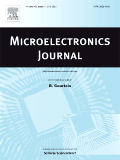
MICROELECTRONICS JOURNAL
Innovating Insights in Nanotechnology and Materials ScienceMICROELECTRONICS JOURNAL, published by Elsevier Sci Ltd since 1974, serves as a pivotal platform for disseminating cutting-edge research in the realms of microelectronics, nanotechnology, and materials science. With editions spanning from 1974 to 2024, the journal is well-respected within the scientific community, boasting a strong presence in key categories such as Atomic and Molecular Physics, Condensed Matter Physics, and Electrical and Electronic Engineering, as evidenced by its Q3 ranking in 2023. Researchers and professionals engaged in the exploration of electronic materials, optical applications, and nanoscale innovations can greatly benefit from the journal's insights, which situate their work within a robust academic framework. Although the journal does not currently offer open access, its rigorous peer-review process and high visibility in Scopus rankings—including a percentile ranking of 58th in Condensed Matter Physics—make it an essential resource for anyone looking to stay at the forefront of advancements in microelectronics and related fields.
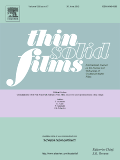
Thin Solid Films
Unveiling the Science Behind Advanced Thin Film SolutionsThin Solid Films, published by ELSEVIER SCIENCE SA, is a highly regarded journal in the fields of materials science and physics, specifically focused on the properties and applications of thin films. Established in 1967, this journal has been a leading platform for disseminating research on surfaces, coatings, and advanced materials. With its consistent publication through the notable HIndex of scholarly impact, this journal showcases a diverse range of studies ranging from electronic, optical, and magnetic materials to novel surface and interface engineering. In recent evaluations, Thin Solid Films has achieved significant rankings, including a Q2 position in Materials Chemistry and Metals and Alloys, reflecting its relevance and importance in ongoing scientific discourse. Although it does not offer open access, it provides a vital resource for researchers, professionals, and students seeking to advance their knowledge and expertise in thin film technology. The journal's commitment to quality and innovation makes it an essential publication for anyone engaged in the field.

Journal of Semiconductor Technology and Science
Pioneering Research in Semiconductor TechnologyThe Journal of Semiconductor Technology and Science, published by the IEEK PUBLICATION CENTER, serves as a vital platform for advancing the field of semiconductor technology and materials science. With its ISSN 1598-1657 and E-ISSN 2233-4866, this journal has been pivotal since its inception in 2005, continuing to shed light on innovative research until 2024. Although currently classified in the Q4 category for both Electrical and Electronic Engineering and Electronic, Optical and Magnetic Materials, it remains a crucial resource for those in industry and academia alike, providing in-depth analyses and findings that explore the complexities of semiconductor applications. Researchers and professionals will find value in its comprehensive articles that address current trends and future directions in semiconductor technologies. This open-access journal, published in South Korea, is positioned to foster collaboration among students, professionals, and leading researchers in the ever-evolving technology landscape.
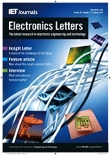
ELECTRONICS LETTERS
Innovating the Future of Electronics.ELECTRONICS LETTERS, published by WILEY, is a leading peer-reviewed journal dedicated to the field of Electrical and Electronic Engineering. With a rich history dating back to 1965, this journal serves as a prominent platform for disseminating novel research and innovations in electronics, covering topics such as circuit design, telecommunications, and signal processing. In 2021, the journal transitioned to an Open Access format, ensuring that cutting-edge research is freely accessible to a global audience, thereby enhancing its impact and outreach. The journal currently holds a Q3 quartile ranking in its category, reflecting its solid position among its peers, and ranks #451 out of 797 in Scopus for Electrical and Electronic Engineering, placing it within the 43rd percentile. ELECTRONICS LETTERS is essential for researchers, professionals, and students looking to stay abreast of the latest developments and contribute to advancements in the field, fostering collaboration and knowledge sharing in a rapidly evolving landscape.

Electronic Materials Letters
Unveiling the Potential of Advanced MaterialsElectronic Materials Letters is a distinguished journal dedicated to the dissemination of research in the field of electronic, optical, and magnetic materials. Published by the Korean Institute of Metals and Materials, this journal has established itself as a critical platform for scholars and practitioners since its inception in 2008, with coverage extending through 2024. With an ISSN of 1738-8090 and an E-ISSN of 2093-6788, it has achieved a commendable Q3 categorization for 2023, ranking 107 out of 284 in the Scopus database's specialized field, reflecting its relevance with a 62nd percentile position among its peers. Although this journal operates under a traditional access model, its rigorous peer-review process ensures that only the most impactful research reaches its audience, thereby maintaining high scholarly standards. Positioned in South Korea at the heart of technological innovation, Electronic Materials Letters plays a vital role in bridging the gap between theoretical investigations and practical applications, making it an essential resource for researchers, industry professionals, and students aiming to thrive in the rapidly evolving materials science landscape.

Facta Universitatis-Series Electronics and Energetics
Fueling Progress in Electronics and Renewable Energy.Facta Universitatis-Series Electronics and Energetics is a prestigious open-access journal published by UNIV NIS, focusing on the fields of electronics and energy systems. With its commitment to disseminating cutting-edge research since 2004, the journal plays a significant role in fostering innovation and collaboration among scholars and practitioners in these vital disciplines. The journal welcomes a broad spectrum of topics, including electronic engineering, renewable energy technologies, energy efficiency, and smart grid solutions. As an accessible research outlet, it caters to a global audience, making high-quality research available to everyone regardless of geographic or institutional barriers. Researchers, professionals, and students will benefit from the journal's diverse contributions, ensuring they stay at the forefront of developments in electronics and energetics. The journal has established its authority within the field, enhancing visibility and engagement opportunities for authors and readers alike.
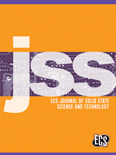
ECS Journal of Solid State Science and Technology
Unlocking the Potential of Solid State InnovationsECS Journal of Solid State Science and Technology, published by the Electrochemical Society, is a prominent journal dedicated to the advancement of research in the field of electronic, optical, and magnetic materials. With an ISSN of 2162-8769 and an E-ISSN of 2162-8777, this journal has established a significant presence since its inception in 2012, spanning critical developments in solid-state science that are essential for innovative technologies. Operating within the United States and recognized for its global outreach, it holds a respectable Q3 category ranking in the materials science category as of 2023, reflecting its commitment to high-quality research and its role in bridging theoretical and applied aspects of materials science. Researchers, professionals, and students alike will find vital information and cutting-edge studies that further the understanding and applications of solid-state technologies. The journal is accessible to an extensive audience, making it an invaluable resource for those engaged in the ever-evolving landscape of materials science.

npj Flexible Electronics
Unveiling the Potential of Flexible Electronicsnpj Flexible Electronics, published by NATURE PORTFOLIO, is a premier open-access journal dedicated to the rapidly advancing field of flexible electronics. Since its inception in 2017, the journal has gained significant recognition, boasting impressive rankings as a Q1 journal in both Electrical and Electronic Engineering and Materials Science based on the 2023 metrics. With its E-ISSN 2397-4621, the journal serves as an essential platform for researchers, professionals, and students alike, facilitating the dissemination of high-quality research articles, reviews, and insights that drive innovation across multidisciplinary applications. Operating from its base in Berlin, Germany, and characterized by a robust impact within the academic community, npj Flexible Electronics plays a critical role in shaping the future of electronic materials and devices. The journal offers comprehensive open access options, ensuring that cutting-edge research is readily available and widely disseminated, fostering collaboration and engagement within the global research community.
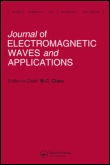
JOURNAL OF ELECTROMAGNETIC WAVES AND APPLICATIONS
Unveiling the Potential of Electromagnetic WavesJournal of Electromagnetic Waves and Applications, published by Taylor & Francis Ltd, is a prestigious interdisciplinary journal that focuses on the rapidly evolving fields of electromagnetic waves and their applications. Since its inception in 1987, this journal has served as a vital resource for researchers, practitioners, and students interested in the latest advancements in electrical and electronic engineering, as well as materials science. The journal holds a respectable Q3 ranking in Electrical and Electronic Engineering and Electronic, Optical, and Magnetic Materials, and Q2 in Physics and Astronomy according to the 2023 category quartiles. With a dedicated readership, it aims to publish high-quality research articles that foster innovation and knowledge sharing among the scientific community. Despite not being open access, the journal ensures widespread availability of its insightful content aimed at pushing the boundaries of knowledge in the electromagnetic spectrum. As a crucial platform for disseminating cutting-edge research, the Journal of Electromagnetic Waves and Applications continues to contribute significantly to the advancement of technology and materials science.